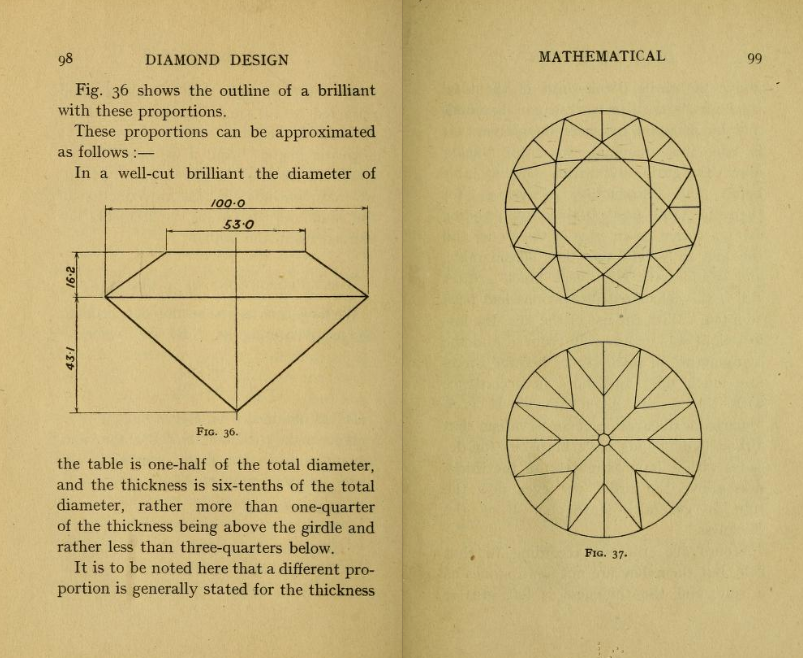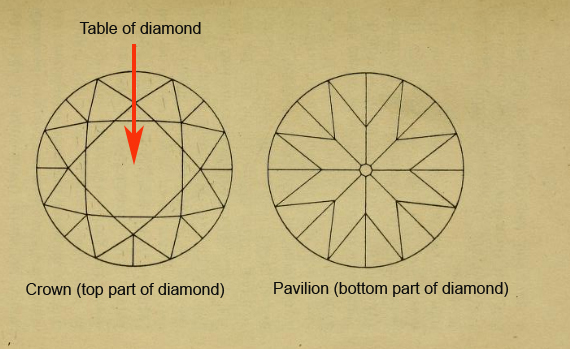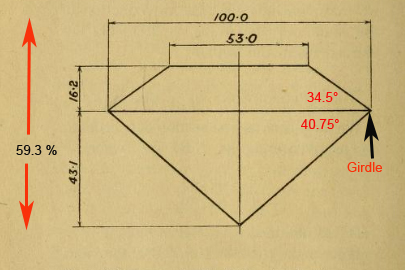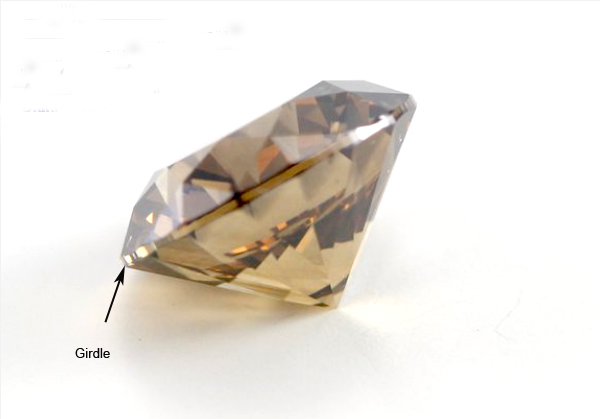Shine Bright Like A Diamond
We take it for granted that all diamonds shine bright and reflect the light in such a dazzling way. Rough diamonds however, have to go through an extensive process with master diamond cutters shine as brightly as they do.
One of the brilliant round cut diamonds for sale at CaratsDirect2u.com
Throughout two thousand years of diamond cutting, these master cutters contributed new cutting techniques, updated tools and added new types of diamond cuts to their craft. There was however one diamond cutter, Marcel Tolkowsky, who turned the craft of a diamond cutting into an exact science.
A Family Of Diamond Cutters
Marcel Tolkowsky was born into one of the influential families in the diamond world. The family originally came from Poland but moved to the diamond district of Antwerp in Belgium during the 1840’s.
Abraham Tolkowsky, Marcel’s grandfather, wanted his children pay more attention to the technical, rather than the commercial side of this world. Maurice and Samuel, two of Abraham’s nine children, became professional diamonds cutters. Maurice, together with another diamond cutter, invented one of the first diamond bruting machines.
The Grandson Who Loved Maths
It was however Marcel Tolkowsky’s technical contribution to the diamond world that is still in use today. He worked in the family’s workshop from an early age but went to study mathematics and engineering at the University of London. In 1919 he published his Ph.D thesis called Diamond Design – A Study of the Reflection and Refraction of Light in a Diamond.

Even though people have been cutting diamonds for millennia, this book was the first scholarly document about the properties of diamonds and how to scientifically cut a diamond to optimize its brilliance.
How To Make A Diamond Sparkle
In the first part of his thesis, Marcel writes about the history and evolution of diamond cutting. In the second part he explains the optical property of a diamond and how light moves through a diamond.
The extremely strong structure of diamonds means that its atoms are densely packed which in turn slows down the speed of light as it moves through a diamond. The more light is slowed-down, the more it bends. This is known as the refraction of light.
Remember that white light is a mixture of colors and during refraction it gets separated into these different colors. All these small rainbows of color in a diamond is known as chromatic dispersion. Gemologists refer to it as the fire of a diamond.
The reflection of the light is the third property of a diamond that makes it sparkle. Every facet on the diamond acts like a small mirror and shines the light back to the viewer.
The 58 Facets Of A Brilliant Round Cut Diamond
As Marcel Tolkowsky investigated how diamonds interact with light, he came to the conclusion that that 58 facets are the ideal number to maximize the brilliance of the diamond. He concluded that there should be 38 cuts on the crown (the top part) of the diamond and 20 facets on the lower side, or the pavilion, of the diamond.

The proportions of the crown and the pavilion, as well as the size of the table (the very top facet of the diamond) is however just as important. If the bottom part, or the pavilion of the diamond is too long, it is said that the pavilion is too deep. Instead of reflecting the light back through the top of the diamond, it escapes from the sides and the table is too dark. This is known as ‘nail-head’. If the pavilion is too shallow, the girdle of the diamond is reflected through the table and creates an effect known as“fish-eye’.
Marcel carefully measured the various angles and proportions that will create the highest percentage of brilliance in a round cut diamond. His protocol follows these measurements:

• Crown angle should be 34.5°
• Pavilion angle should be 40.75°
• Table size should 53% of the diameter of the diamond
• Total depth 59.3%
• The crown height 16.2%
• The table height 43.1%
The Girdle Of the Brilliant Cut Round Diamond
Marcel Tolkowsky’s ideal round diamond cut revolutionized the diamond cutting world and these measurements are still used today as a template.
There is however one small flaw in Marcel’s calculations. He did not take the size of the girdle in consideration. The girdle is the thin perimeter that runs around the widest part of the diamond. A quick look at the diagram from Marcel’s thesis shows that the girdle has no measurement.
It has been accepted that he meant the girdle to be at 0% to create a knife-edge girdle. It is however not technically possible to create a brilliant round cut diamond with a knife-edge girdle. There must be a small border area between the crown and the pavilion to create the required facets.
If you look carefully, you will notice that all round diamonds do indeed have a small girdle. It should be too thin, nor too thick.
The Future Of The Brilliant Cut Round Diamond
The future of the brilliant cut round diamond is as bright as ever. Diamond cutters all over the world are still using Marcel Tolkowsky measurements even though they have adapted and improved his designs. Without any doubt, his scientific research on how to make a diamond shine, is still one of the biggest contributions to the diamond cutting world.
After nearly 100 hundred years, his words are still true:
“That some new shape will be evolved which will cause even greater fire and life than the brilliant is, of course, always possible, but it appears very doubtful, and it seems likely that the brilliant will be supreme for, at any rate, a long time yet.”
The brilliant round cut diamond is indeed still the most popular cut and what most of us think about when we think of diamonds. CaratsDirect2u has a large range of round loose diamonds as well as engagement rings with brilliant round cut diamonds.
Feel free to have a look at our catalog and contact us at 1-800-557-7095 or sales@caratsdirect2u.com if you need any assistance.
